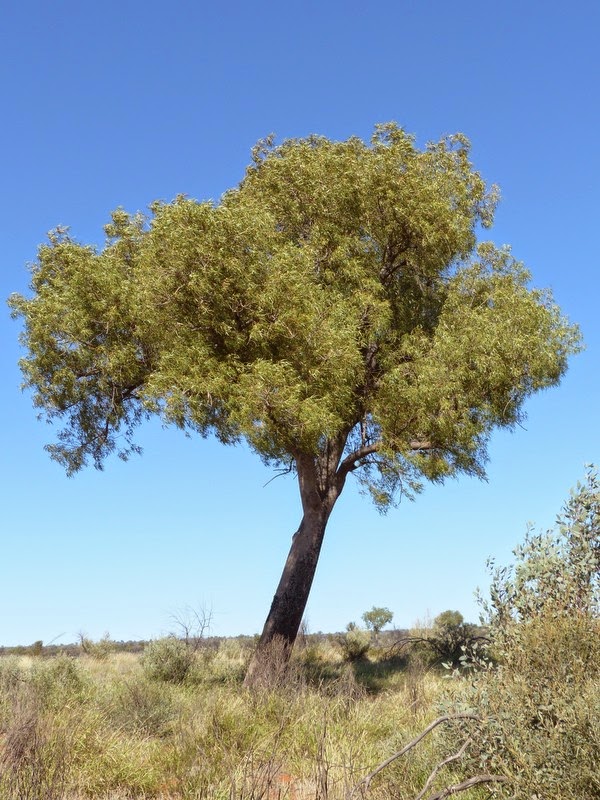Having just returned from a week and a bit based in Darwin at the very northern end of central Australia (and having organised my photos) it's inevitable that this wonderful tropical part of the world should feature today. Some people considered us mad for visiting during the 'Wet' (or the 'Green Season' as the tourist industry has taken to preferring!) and while they may have a case, we loved it. It doesn't rain all the time, though impressive storms featured late on most days, and while it's of course humid the temperatures were surprisingly mild - no more than about 33 degrees.
 |
| Darwin, capital of the Northern Territory, at the end of the red arrow. We live a bit over 3000km away (and some 2600km to the south) at the end of the green arrow. |
One 'must visit' destination for any visitor is the magnificent Territory Wildlife Park (the 'Northern' is apparently considered superfluous!), 60km south of Darwin. Technically I suppose it is a zoo, but that conjures up images quite misleading in this case. Founded by the territory government in 1989, it is set in 400 hectares of natural habitat, of which only a tiny proportion is developed. A four kilometre circuit track is regularly travelled by a little train (not on rails) driven by informative guides and is paralleled by walking tracks which also branch off into the bush. Features include a series of habitat-based aviaries, culminating in a huge and magnificent aviary featuring the monsoon forest; an aquarium including a walk-through tunnel with animals swimming by and over you; a nocturnal house, and daily educational displays of free-flying birds. All are well done, and the educational and conservation themes are powerful.
However I want to feature today 'the rest' - the huge area of the park which is outside the developed sections, accessed by the walking track system. There are three basic habitat types represented within the grounds; dry woodland, monsoon forest and wetland systems, though each can be further sub-divided.
 |
| Dry eucalypt woodland, the dominant vegetation type of the Top End. Above, featuring 'Screw Palm' Pandanus spiralis,and below the cycad Cycas armstrongii; both are common understorey components. |
Wetlands comprise open water and their fringing vegetation, plus surrounding areas of paperbark (Melaleuca spp.) swamp woodland which may be inundated for weeks or more every year.
 |
| Goose Lagoon (above) and associated paperbark swamp (below). |
The rain didn't disappoint us either. On the one occasion we travelled a section in the little (open-sided) train it bucketed down, and as we cornered a gush of water from the roof filled the curved plastic bench sit beneath us. We naturally leapt up - and were politely but firmly requested by the driver-guide to sit down again! Oh well, it was a warm pool to sit in at least.
 |
| Tropical rain in the Park. The attractive but bedraggled centipede (below) shared our shelter; I'm afraid poor light and its haste to escape make for an inadequate photo. |
Which brings us to the many wild animals which dwell within the park boundaries. One of the apparently counter-intuitive aspects of the Wet is that water birds are far harder to find than in the Dry. It makes sense of course - with water across ten of thousands of square kilometres of country the birds are scattered across the plains. However even now there are some to be found around the park's wetlands.
 |
| Australian Pelicans Pelecanus conspicillatus. |
 | |
| Radjah Shelducks Tadorna radjah are well within the mainstream of duckdom - and in my opinion are one of the most beautiful ducks in the world. |
 |
| Forest Kingfishers Todiramphus macleayii are another spectacularly beautiful component of tropical Australian birdlife; they are members of the tree kingfisher family. |
 |
| Agile Wallaby Macropus agilis, the commonest wallaby of northern Australia. You can't afford to live up here if you can't cope with wet feet and a bit of rain! |
 |
| This Javelin Frog's (Litoria microbelos) luck changed for the better when we arrived at the Goose Lagoon bird hide. It was being seriously molested by a trio of Green Tree Ants and launched itself at me when I appeared. The ants were dislodged and I placed it on a post outside (below) from where it could jump into the water. It was still being stalked however... |
Reptiles are always present in the Top End, and the Wildlife Park is no exception.
 |
| Slender Rainbow Skink Carlia gracilis. This is a breeding male; only they develop the spectacular blue-green head and bright chestnut sides. |
So, when you go the Top End, whatever the season you must visit the Territory Wildlife Park; when you do so don't miss the aviaries and aquariums, but equally importantly don't miss the wealth of life going about its wonderful business outside the developed sections. This is the Top End concentrated!
BACK ON TUESDAY
[If you'd like to leave a message, I'd
love to hear from you. I've changed settings so that you don't have to
have an account with Google or anyone else, and you don't have to
identify yourself - though I'd love to know who I'm talking to. You only
have to prove you're human by clicking in a circle; they've made this an infinitely simpler process now than it used to be. I tried it for a while with no
restrictions, but got swamped by horrible spammers.
I know that lots of people read this, but very few comment. ]
I know that lots of people read this, but very few comment. ]


























































